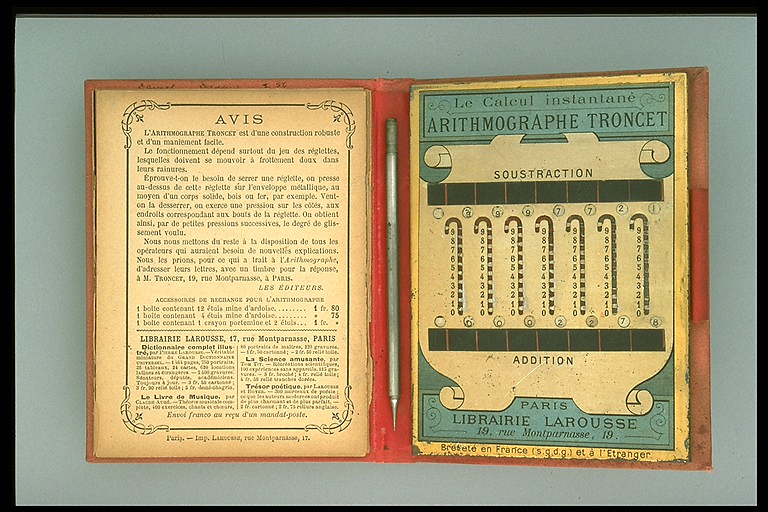Mathematical Treasure: Troncet Arithmographe Owned by Daniel Draper

Troncet Arithmographe, an Adder or Aid to Arithemetic, 1895, Smithsonian negative number 94-3981.
From the mid-19th century, Americans have used simple instruments to assist them in doing arithmetic. Some of these did not actually add and subtract, but made it easier for users to do so. Louis-J. Troncet patented this instrument in his native France in 1889, and it was published there by Larousse. The Troncet arithmographe, like an instrument issued by the Russian Heinrich Kummer in the 1840s, used flat metal bands with notched edges to represent digits. These bands were moved with the stylus to enter numbers. The New York meteorologist Daniel Draper purchased this example for $2.50. It came in a small notebook with a set of multiplication tables.
By the 1920s, as adding and calculating machines became common, a growing number of makers and dealers also offered these portable, less expensive instruments. Troncet’s design was widely adopted.
Following World War II, manufacture of adders shifted almost entirely to Germany and Japan. A few carried out calculations in base 60 and were marketed to computer scientists. During the 1970s, newly introduced inexpensive electronic calculators replaced the adder.
For information about other adders, see the National Museum of American History website http://americanhistory.si.edu/collections/object-groups/adders.